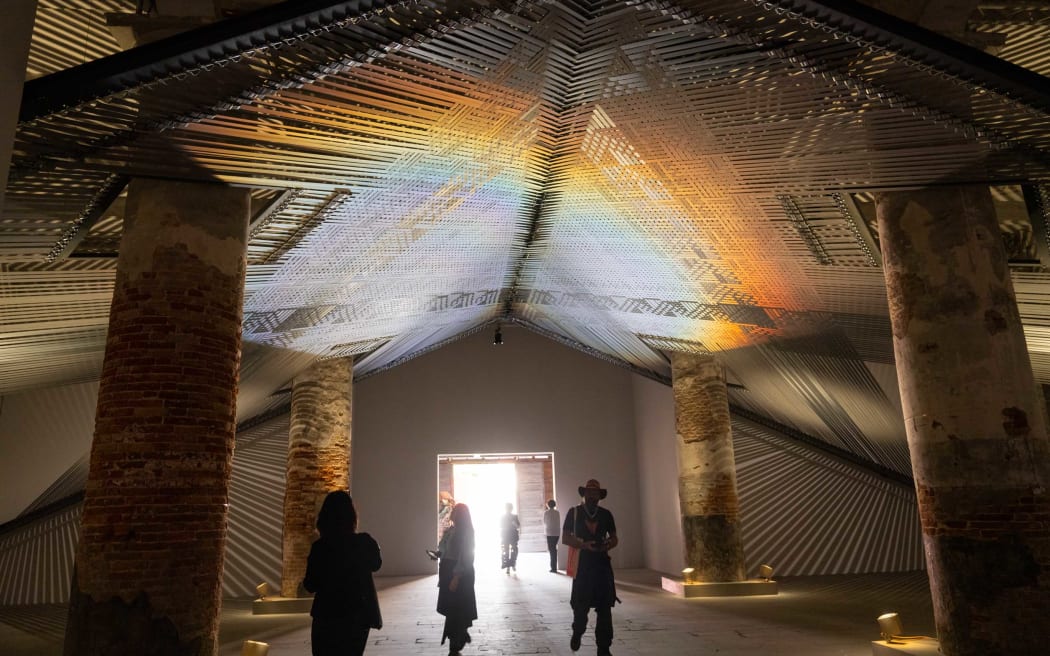
Mataaho Collective's Takapau in Stranieri Ovunque, Foreigners Everywhere at the 30th Venice Biennale. Photo: Ben Stewart
Aotearoa New Zealand has won one of the world’s most prestigious art prizes.
Mataaho collective have been awarded the Golden Lion by a jury at the 60th Venice Biennale for their large scale work in the main curated exhibition.
Held every two years, the Biennale is dubbed the Olympics of the art world and Mataaho collective’s achievement, as Creative New Zealand’s Amanda Hereaka describes, is “the equivalent of winning a gold medal.”
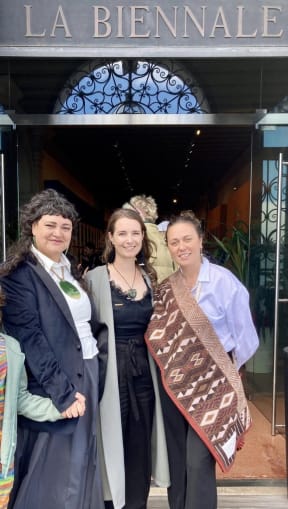
Three of the four members of Mataho collective after the ceremony in Venice: Sarah Hudson, Terri Te Tau and Erena Baker Photo: Jess Waugh
The Mataaho collective comprises four Māori women - Bridget Reweti, Erena Baker, Sarah Hudson, and Terri Te Tau. Their large-scale work Takapau is an installation made of woven and latticed polyester hi-vis tie-downs and was recently shown at Te Papa.
It opens the Arsenale section of the Biennale and serves as waharoa or gateway to the rest of the show. The group exhibition Stranieri Ovunque, Foreigners Everywhere, has been curated by the Biennale’s artistic director Brazilian Adriano Pedrosa, and features 331 artists. Eight Māori artists will feature alongside Mataaho, Sandy Adsett, Brett Graham, Fred Graham, and the late Selwyn Te Ngareatua Wilson.
“Referring to matrilinear traditions of textiles with its womb-like cradle, the installation is both a cosmology and a shelter,” the jury said in their citation for the prize, which was read by the jury president Julia Bryan-Wilson.
“Its impressive scale is a feat of engineering that was only made possible by the collective strength and creativity of the group.”
“It’s just immense, I’m almost speechless,” says Māori curator Matariki Williams, speaking to Culture 101 not long after the award announcement.
“You can imagine the huge mix of emotions people are feeling, lots of pride. Incredible excitement.”
Minister for Arts, Culture and Heritage Paul Goldsmith congratulated the collective.
"Congratulations to the Mataaho Collective for winning one of the world's most prestigious art prizes at the Venice Biennale.
“It is good to see New Zealand artists excelling internationally, and showcasing the best of our art and culture to the world.
“This win is a glowing endorsement of the brilliant work of the Mataaho collective and shows, again, our artists are world leaders.”
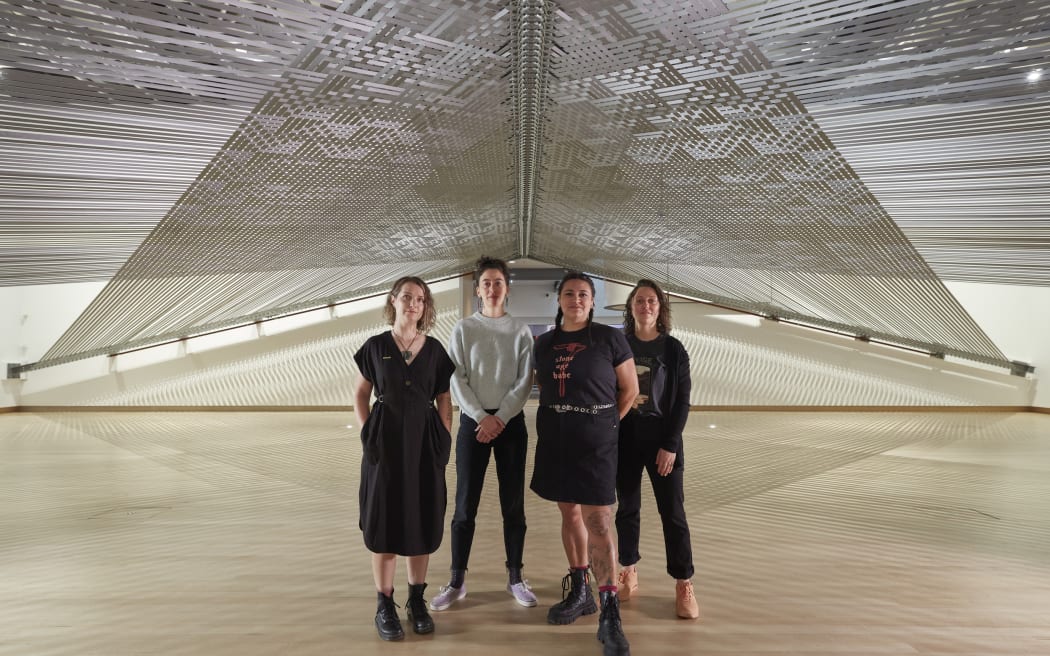
Mataaho Collective underneath Takapau 2022. Photo: All rights Reserved / Te Papa
But it’s not just Aotearoa New Zealand celebrating. It’s a significant weekend for art in Oceania and Indigenous artists worldwide. The other major award at Venice, The Golden Lion for National Pavilion, has been awarded to Australia’s representative at the Biennale, Archie Moore. It is the first time Australia has won this award.
Archie Moore’s work traces his family history, inscribing on the walls in chalk thousands of names. In the centre of the installation are piles of coronial reports with names redacted from the official inquests into hundreds of Indigenous deaths in Australian state care.

Brett Graham's Wasteland in Stranieri Ovunque, Foreigners Everywhere at the 30th Venice Biennale. Photo: Ben Stewart
This year New Zealand has elected not to have a national pavilion but instead support the artists appearing in the main curated exhibition.
The 60th Venice Biennale, which is on until November, has a strong focus this year on indigenous artists, and with 88 national pavilions, there has been plenty of interesting geopolitics.
Leading international arts news this week, the artists and curators of the Israeli national pavilion announced that they wouldn’t open until “a ceasefire and hostage release agreement is reached” in the conflict in Gaza. Israel has been widely criticised this year for its national presence.
Artistic Director and curator Pedrosa’s theme of ‘Foreigners Everywhere’ has seen him focus on queer, Indigenous, and outsider art, with an additional strong focus on the Global South. Hence the strong showing from Aotearoa.
Indigenous artists feature strongly both in this exhibition and in this year’s pavilions. A collective of painters from the Brazilian Amazon, MAHKU (Movimento dos Artistas Huni Kuin), have covered the facade of the central exhibition hall, which contains New Zealand’s contributions, with an intricate mural, while the Brazilian Pavilion nearby has been renamed the Hãhãwpuá Pavilion, referring to the name the Pataxó people used for Brazil.
Denmark is represented by an Inuit Greenlandic artist for the first time and Asia's newest nation Timor-Leste (East Timor) makes its Venice Biennale debut. Ethiopia has a pavilion for the first time, invited by Italy, a state that occupied Ethiopia but never managed to colonise it.
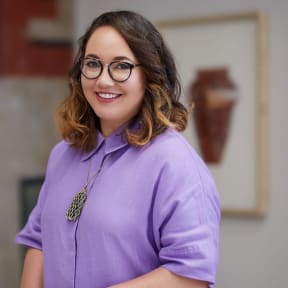
Matariki Williams Photo: supplied
While Venice itself has historically been a place in Europe that has long welcomed foreigners (both merchants and refugees) artistic director Pedrosa speaks of the Indigenous artist as ''frequently treated as a foreigner in his or her own land.'' His celebration of foreigners comes with a more rightwing leaning Italian government that is cracking down on welcoming migrants.
Aotearoa curator Matariki Williams was selected along with Israel Randall as part of a Delegates Programme run by Creative Australia, focused on building international connections. It’s the first time New Zealand has participated in the programme which, with Archie Moore’s win, has seen the joined up work by Creative Australia and Creative New Zealand turn out incredibly timely.
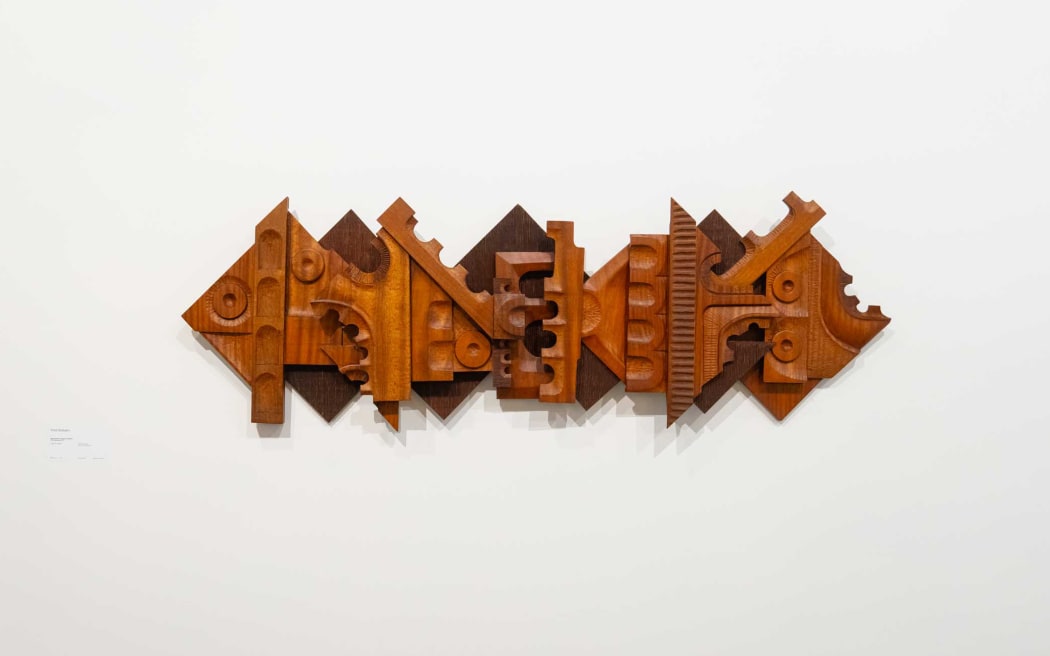
Fred Graham's Tamariki a Tangaroa in exhibition Stranieri Ovunque, Foreigners Everywhere at the 30th Venice Biennale. Photo: Ben Stewart
Matariki Williams has previously been Senior Historian, Mātauranga Māori at Manatū Taonga and Curator Mātauranga Māori at Te Papa Tongarewa. She co-authored Protest Tautohetohe: Objects of Resistance, Persistence and Defiance and co-founded ATE Journal of Māori Art.
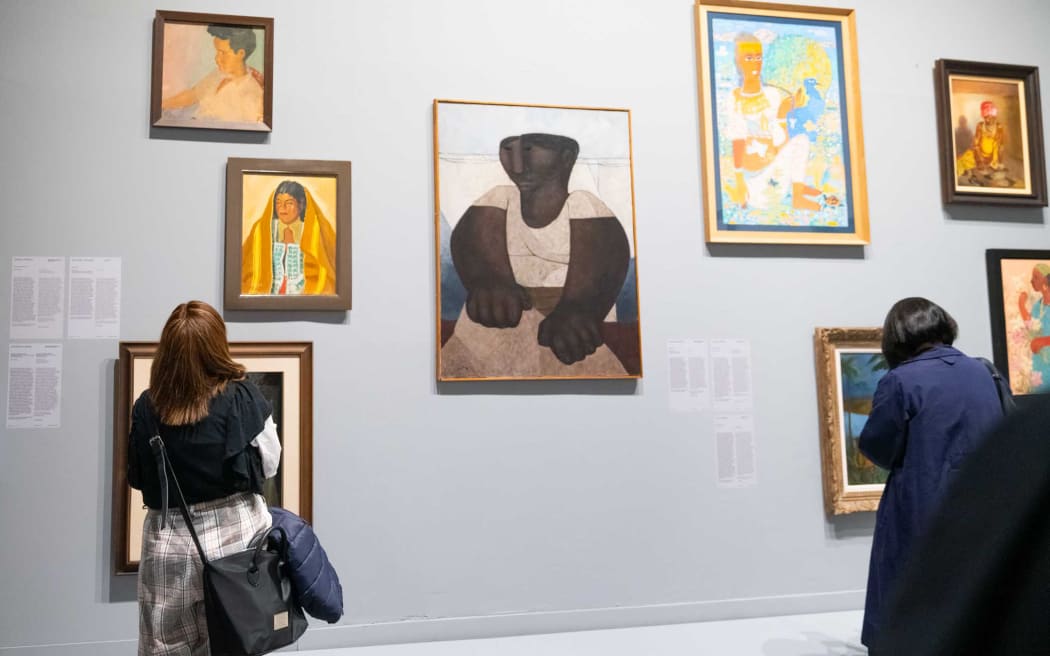
Selwyn Wilson's Study of a head in Stranieri Ovunque, Foreigners Everywhere at the 30th Venice Biennale. Photo: Ben Stewart
The 60th Venice Art Biennale runs until November.
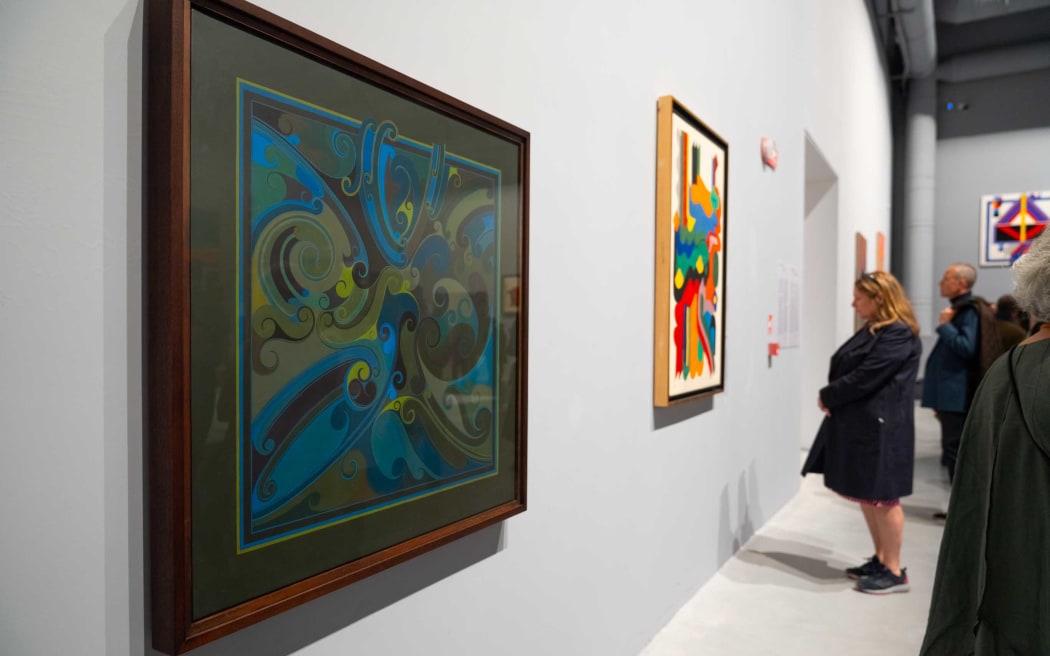
Sandy Adsett's Waipuna in Stranieri Ovunque, Foreigners Everywhere at the 30th Venice Biennale. Photo: Ben Stewart
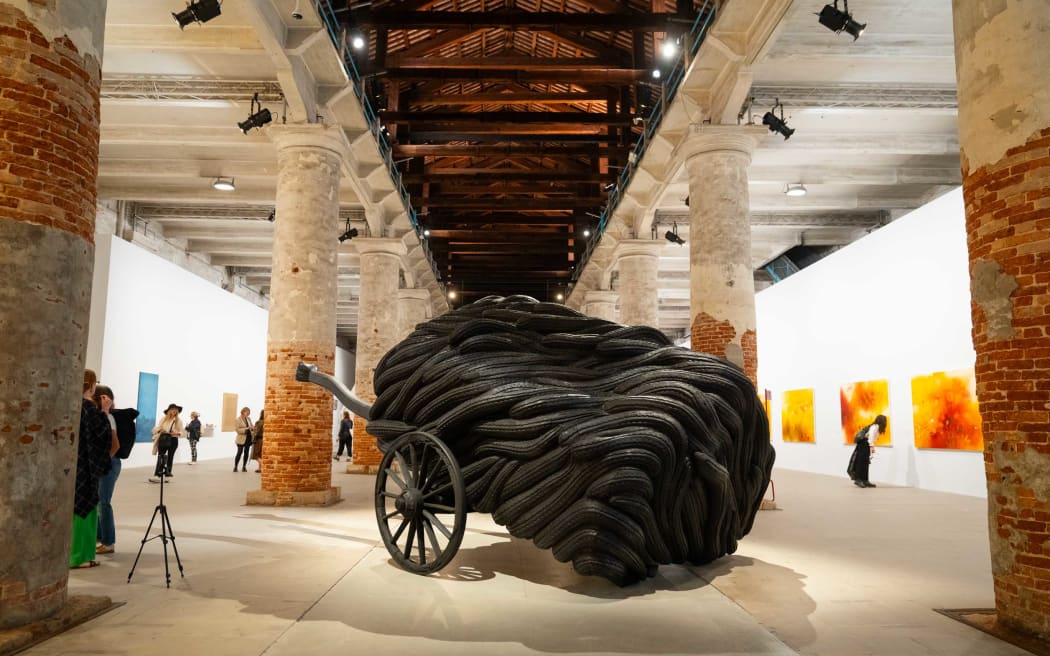
Brett Graham's Wasteland in Stranieri Ovunque, Foreigners Everywhere at the 30th Venice Biennale. Photo: Ben Stewart
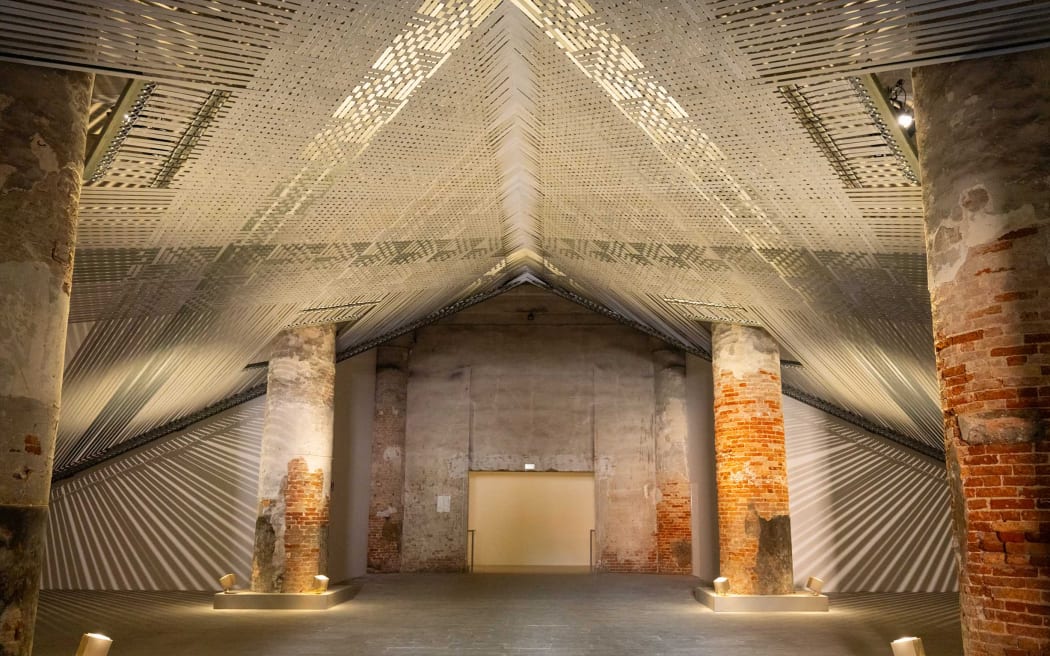
Mataaho Collective's Takapau in Stranieri Ovunque, Foreigners Everywhere at the 30th Venice Biennale. Photo: Ben Stewart


